| # | Image | Term | Mayor | Party |
|---|
| 1 |  | June 1834 - 1835 | Jonathan Child | Whig |
| 2 | | July 1835 - December 1836 | Jacob Gould | Democrat |
| 3 | | December 1836 - 1837 | Abraham M. Schermerhorn | Whig |
| 4 | | March 1837 - 1838 | Thomas Kempshall | Whig |
| 5 | | 1838 - December 1838 | Elisha Johnson | Democrat |
| 6 | | December 1838 - December 1839 | Thomas H. Rochester | Whig |
| 7 | 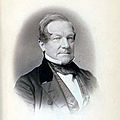 | December 1839 - 1840 | Samuel G. Andrews | Whig |
| 8 | | 1840 - 1842 | Elijah F. Smith | Whig |
| 9 | | March 1842 - 1843 | Charles J. Hill | Democrat |
| 10 | | 1843 - 1844 | Isaac Hills | Democrat |
| 11 | | March 1844 - March 1845 | John Allen | Whig |
| 12 | | March 1845 - 1847 | William Pitkin | Whig |
| 13 | | 1847 - 1848 | John B. Elwood | Democrat |
| 14 | | 1848 - 1849 | Joseph Field | Democrat |
| 15 | | March 1849 - 1850 | Levi A. Ward | Whig |
| 16 | | March 1850 - 1851 | Samuel Richardson | Democrat |
| 17 | | 1851 - 1852 | Nicholas E. Paine | Democrat |
| 18 | | 1852 - 1853 | Hamblin Stillwell | Democrat |
| 19 |  | 1853 - 1854 | John Williams | Democrat |
| 20 | | 1854 - 1855 | Maltby Strong | Whig |
| 21 | | 1855 - 1856 | Charles J. Hayden | American |
| 22 |  | 1856 - 1857 | Samuel G. Andrews | Republican |
| 23 | | 1857 - 1858 | Rufus Keeler | Democrat |
| 24 | | 1858 - 1859 | Charles H. Clark | Democrat |
| 25 | | 1859 - 1860 | Samuel W. D. Moore | Republican |
| 26 | | 1860 - 1861 | Hamlet D. Scrantom | Republican |
| 27 | | March 1861 - April 1862 | John C. Nash | Republican |
| 28 | | April 1862 - April 1863 | Michael Filon | Democrat |
| 29 | | April 1863 - March 1864 | Nehemiah C. Bradstreet | Democrat |
| 30 | | March 1864 - March 1865 | James Brackett | Democrat |
| 31 | | March 1865 - 1866 | Daniel D. T. Moore | Republican |
| 32 | | 1866 - 1867 | Samuel W. D. Moore | Republican |
| 33 | | March 1867 - 1869 | Henry L. Fish | Democrat |
| 34 | | 1869 - 1870 | Edward M. Smith | Republican |
| 35 | | 1870 - 1871 | John Lutes | Democrat |
| 36 | | April 1871 - April 1872 | Charles W. Briggs | Republican |
| 37 |  | April 1872 - October 28, 1873 [6] | Abel Carter Wilder | Republican |
| 38 | | October 28, 1873 - 1874 | George W. Aldridge, Sr. (acting) | Republican |
| 39 | | 1874 - 1876 | George G. Clarkson | Republican |
| 40 | 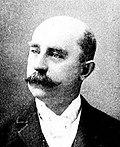 | 1876 - 1890 | Cornelius R. Parsons | Republican |
| 41 | | 1890 - 1892 | William Carroll | Democrat |
| 42 |  | 1892 - 1894 | Richard J. Curran | Republican |
| 43 |  | April 1, 1894 - January 22, 1895 | George W. Aldridge | Republican |
| 44 | 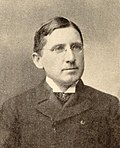 | January 22, 1895 - December 31, 1895 | Merton E. Lewis (acting) | Republican |
| 45 | | January 1, 1896 - December 31, 1899 | George E. Warner | Democrat |
| 46 | | January 1, 1900 - December 31, 1901 | George A. Carnahan | Republican |
| 47 |  | January 1, 1902 - December 31, 1903 | Adolph J. Rodenbeck | Republican |
| 48 | 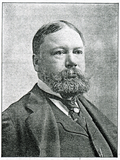 | January 1, 1904 - December 31, 1907 | James G. Cutler | Republican |
| 49 |  | January 1, 1908 - December 31, 1921 | Hiram Edgerton | Republican |
| 50 |  | January 1, 1922 - June 17, 1926 | Clarence D. Van Zandt | Republican |
| 51 | | June 22, 1926 - January 3, 1928 | Martin B. O'Neil | Republican |
| 52 | | January 3, 1928 - March 5, 1930 | Joseph C. Wilson | Republican |
| 53 | | March 5, 1930 - January 2, 1932 | Vice Mayor Isaac Adler & City Manager Stephen B. Story (acting) | Republican |
| 54 | | January 2, 1932 - April 28, 1933 | Charles S. Owen | Democrat |
| 55 | | April 28, 1933 - January 2, 1934 | Percival D. Oviatt | Republican |
| 56 | | January 2, 1934 - December 31, 1937 | Charles Stanton | Republican |
| 57 | | January 1, 1938 - December 31, 1938 | Lester B. Rapp | Republican |
| 58 | | January 10, 1939 - June 14, 1955 | Samuel B. Dicker | Republican |
| 59 | | June 14, 1955 - December 31, 1961 | Peter Barry | Republican |
| 60 | | January 1, 1962 - December 31, 1963 | Henry E. Gillette | Democrat |
| 61 | | January 1, 1964 - December 31, 1969 | Frank Lamb | Democrat |
| 62 | | January 1, 1970 - December 31, 1973 | Stephen May | Republican |
| 63 | | January 1, 1974 - December 31, 1993 | Thomas P. Ryan, Jr. | Democrat |
| 64 |  | January 1, 1994 - December 31, 2005 | William A. Johnson, Jr. | Democrat |
| 65 |  | January 1, 2006 - December 31, 2010 | Robert "Bob" J. Duffy | Democrat |
| 66 | 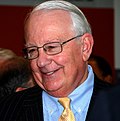 | January 1, 2011 - January 18, 2011 | Thomas S. Richards (interim) | Democrat |
| 67 | | January 18, 2011 - April 11, 2011 | R. Carlos Carballada (interim) | Democrat |
| 68 |  | April 11, 2011 - December 31, 2013 | Thomas S. Richards | Democrat |
| 69 |  | January 1, 2014 - December 1, 2021 | Lovely Warren | Democrat |
| 70 | | December 2, 2021 - December 31, 2021 | James Smith (interim) | Democrat |
| 71 |  | January 1, 2022 – present | Malik Evans | Democrat |
|



















